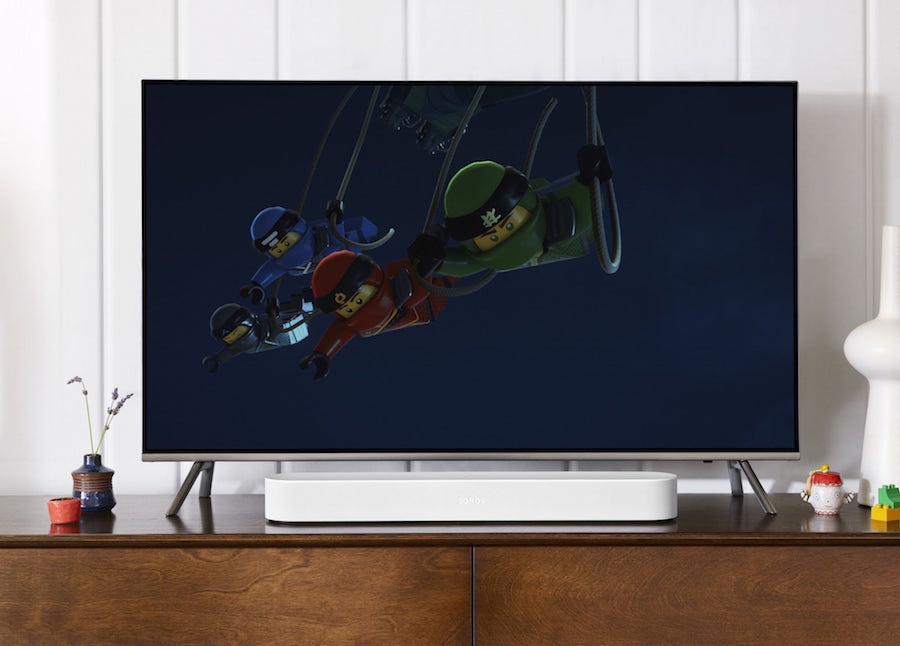Sonos Beam: A Soundbar That Brings Together Siri, Alexa, and Google Assistant
Sonos just announced a new smart speaker called the Sonos Beam. The Sonos Beam is a smart, compact soundbar for your TV. Sonos has always applied a tiered approach to to sound and audio. First there is the Sonos Play: 1, then comes the mid-range Sonos Play:3, and in the top range with the best quality is the Sonos Play:5. When the size of the device increases, this means it is going to offer better audio fidelity, but it also means that it is going to be a tad bit expensive.
An urban device
The Sonos Beam is not just a simple speaker that sits under your TV. The Beam looks like a fabric-wrapped representation of Sonos chooses to look at the future. Sonos imagines the Beam to be a space where voice assistants from Google, Apple, and Amazon can come together and live in the same space. This is an urban device not just for the urban parents to use for Netflix and Hulu, but to up their urban lives and their urban home settings. All this will done with voice commands instead of using a remote.
A bit pricey
Sonos was working on developing the technology of Beam for almost two years. This is a time where things have become a bit critical for Sonos as this 16 year old audio company is going public soon. Sonos has always priced its products a bit high. The company is also feeling pressure from the low end of the smart speaker community.
Smaller than the previous speakers
The Beam is much smaller than Sonos’ two previous speakers. It is just 26 inches across and weights 6 pounds. Playbase and Playbar were a bit too heavy and big in size, so it wasn’t very convenient to move them all the time. But the Beam is one speaker which you can transport easily and it won’t be a hassle. Sizes and dimensions of all the top-selling TVs were taken into consideration in order to fit the Beam. Just like our modern TVs, Beam can be stuck to a wall too.
Carefully designed
The precision and the research that went into designing the Beam explains the obsession of Sonos with the design process of the Beam. It further proves it by using some amazing fabric to wrap around the body of the speaker. It is a circular tube of knitted polyester. The length it is cut too is perfect and then stretched over the part that needs to be covered. The fabric is then attached to the inside edges of the speaker. When you look at the Beam you will not see a single beam. It also has a newly designed microphone array.
Supports CEC
The TV-control capabilities on Sonos are very new. The Beam supports CEC. It is among the features of HDMI standard. The benefit of this is that it lets you use just one remote control for all the different devices in your home theatre. According to Sonos, the major benefit of this is that allows for support of more standards and makes things very simple. Beam will also automatically recognize what remote you are using. Sonos will also provide an HDMI-to-optical adapter. This will allow you to still transfer digital sound to Beam.
Amazing sound
The Beam comes with three passive radiators and four full-range woofers. The Sonos Beam is going to sound amazing. The speaker will sound great even though it is small in size. Sonos is not just concerned with the sound of the speakers, even though it is an audio company. It also wants to establish itself as a good hardware maker.
Trying to mediate between different platforms
Currently, with the Beam you can get access to almost 80 music, radio and podcast services which can be easily accessed from the Sonos app. Sonos, unlike other brands like Apple and Amazon which offer subscription based streaming services, doesn’t want to push their users to go for a service that corners them into buying something that will allow them to use the other streaming services. Sonos wants to take a different approach and offer a platform where Siri, Google Assistant and Alexa get the same kind of treatment. The Sonos Beam is priced at $399, which isn’t exactly cheap, but it also offers more utility. Because Sonos is trying to equate between all the different ecosystems, it can run more services than any other speaker out there.

Dhruvil is a Writer & Marketeer for Nimblechapps, joined in December 2014, based out of Sydney, Australia. He has worked briefly as a Branding and Digital Marketing Manager before moving to Australia. At Nimblechapps, he worked on Social Media Marketing, Branding, Email Marketing and Blogging. Dhruvil studies Business at University of Western Sydney, and also handles Operations for the company in Australia.





